Why none of us can ignore the rise of exclusionary politics

Are you one of us? Or one of them? The question increasingly lies at the heart of our politics. A mental mechanism designed to bind us together and promote social cooperation can be hijacked in times of economic and social stress, morphing into something very dark, sinister and violent. These are not things we like to talk about. But in a world where we are bombarded algorithmically with messages about identity, I think it is salutary to write the occasional cautionary tale.
Salomon Kober was the youngest of four siblings, born into a well-off family of orthodox Jews in the elegant city of Breslau, Silesia (today Wrocław in southern Poland). His father, Wilhelm, ran a metals and chemicals supplies company with his brother, Joseph. The company, set up in 1877, traded across Europe and beyond. It was an example of the legendary ‘Mittelstand’ companies – family owned rather than public – which many in Britain see as one of Germany’s inexplicable economic strengths. The Kobers raised eyebrows in town by being shut on the Saturday rather than Sunday. The pair made serious money, and Wilhelm was famous for his generosity. Legend has it that no one who came to the family house for help left empty handed. When Salomon’s brother, Max, was severely wounded during the first world war, he was saved thanks to surgery in the Jewish Hospital. His grateful parents later made a huge donation to the hospital’s foundation.
Salomon was the baby of the family, 14 years younger than his eldest sister Lotte. Nicknamed ‘Ol’, he was doted on by everyone. The family lived in a big house just outside the limits of the old city at No. 15 Museum Platz, an elegant square built around the bombastic fine art museum. Salomon attended the Real Gymnasium am Zwinger in his hometown, a school known for its chemical laboratory. The grand old building, located near the opera house, is still standing.
Kober graduated from the school in 1922 and matriculated at the Breslau Technische Hochschule (Polytechnic) to study chemistry and metal sciences. His mentor, Bernhard Neumann, was an applied inorganic chemist who had studied with Wilhelm Ostwald in Leipzig. Kober’s marks were consistently high. When he graduated in 1926 Neumann praised his dissertation – on the use of Fuller’s earth to decolourise oils – as exceptional, noting his scientific maturity and his clarity of expression. Three papers and a patent followed.
In 1928 Kober joined a start-up company, Organon, that was the brain-child of a Breslau-born hormone chemist at the University of Amsterdam, Ernest Laqueur.
Sourcing hormones
The role of hormones had been uncovered in the late 19th century, particularly through the work of the French physiologist Charles-Edouard Brown-Séquard who had self-tested these materials, injecting himself with, among other things, the extracts of dog testicles. In his lectures in Paris in 1887 and 1889 Brown-Sequard announced a new age of medicine in which the process of aging would be slowed, if not dispelled. If some of this hype was regarded with a certain distaste – to many it sounded like utter quackery – the work also attracted significant scientific attention; whole new families of signalling molecules began to be discovered.
The molecules were renamed hormones by Ernest Starling in 1905 after his discovery of secretin in pancreatic extracts, and his demonstration that hormone action was independent of the nervous system. In many ways it is Starling’s discoveries that mark the beginning of endocrinology as a scientific discipline.
The real problem with advancing both the science and medical applications of hormones was the lack of availability of the materials themselves. There were only so many pregnant women and mares whose urine you could sample, and there were limits to the quantities of testes, ovaries and pancreases you could source. Some scientists were pushed to desperate measures: Alan Parkes at the National Institutes for Medical Research in London got wind of a blue whale that was being delivered to the British Museum. Hoping for a possible whale-fall, he asked for, and was given, the ovaries. Unfortunately, the organs were so badly spoiled by the time the beast reached London that the project came to nothing.
In the early 1920s, the mathematician J F van Oss introduced Laqueur to Saal Zwanenberg, the owner of a large abbatoir in the small but well-connected town of Oss in the Netherlands, about 80km from Amsterdam. The meeting was very timely. Frederick Banting and Charles Best’s discovery of insulin in 1922 opened up the possibility of treating diabetes, so Laqueur was desperate to get his hands on a source of the hormone; Zwanenberg had more pancreases and other offal than he could sell.
In 1923, van Oss, Laqueur and Zwanenberg set up Organon to process this material. Initially, it specialised in the isolation and sale of insulin isolated from pig and bovine pancreases. But as Adolf Butenandt in Germany began to report the isolation of the sex hormones oestrone, progesterone and testosterone, Organon gradually moved into steroid hormones. It was at this time, probably on the strength of contacts in Breslau, that Kober wrote to Laqueur to ask whether there might be a job for him in the company.
An idea bubbles
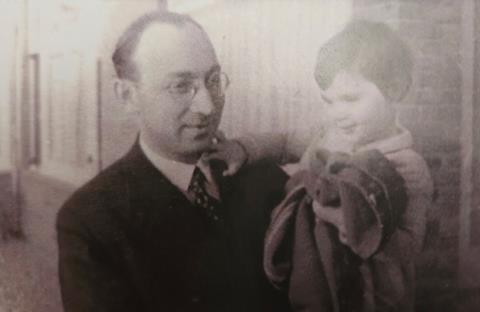
Kober joined on 1 June 1928, working initially in Laqueur’s lab in the Polderweg in east Amsterdam. Given the task of isolating and purifying steroids, Kober rapidly transformed himself into a biological chemist. He must have been pretty good at the bench because in 1930 he published a short paper in Nature with Laqueur on the isolation of crystalline oestrone, from pregnant mares’ urine, an oestrogenic hormone that Organon would soon sell under the name Menformon.
By now Kober had married the daughter of a prominent Breslau music publisher, Eva-Jenni Hainauer, and the first of their three children, Marianne Miriam, was born. Two months after her birth he sent an affectionate postcard from Bonn, addressed to his wife and the ‘Neuerin’ (newcomer). Kober was put in charge of Menformon production – Organon was soon the world’s largest producer of the hormone. But he continued to do basic science. In 1931, he published a short paper describing a new method for the purification of steroid hormones by fractional distillation using a ‘kugelrohr’. Kober must also have been (or had access to) a good glassblower – blowing a series of identical bubbles in a straight tube remains a classic rite of passage for young glassblowers.
Kugelrohrs were nothing new. The word simply means bubble tube. A cursory search through 19th century German chemistry texts turns up hundreds of examples. Adolphe Wurtz used a tube with a series of bubbles along it as a fractionator for distillation; Justus Liebig used a kugelrohr bent into a triangle and filled with caustic potash to absorb CO2 in his scheme for combustion analysis; Friederich Allihn used a Kugelrohr as the central part of his reflux condenser. There is even a German patent for a syrup concentrator where juice dripped onto a steam-filled tube with 52 bubbles wound in a multilayer spiral to deliver syrup into a reservoir below.

Kober’s idea was to distil a liquid horizontally from one bubble to the next, the vacuum maintained at 10–3 mmHg or below using a Gaede rotary pump. Kober proposed a straight tube with five bubbles, equipping the first with a side tube through which the sample was introduced. After sealing at that end, the tube was placed into an ‘air bath’ (tube furnace): a close-fitting copper tube sitting in a thermostatted oil bath. With the oil bath at low temperature the tube would be inserted with only the fifth and last bubble exposed. Once evacuated, the temperature was raised and the first distillate collected in the fifth flask. The tube would now be slid outwards to expose the fourth bubble and the temperature raised. In this way up to five fractions could be collected; by cutting the glass at the constrictions, each fraction could be isolated and weighed.
Kober concluded his paper by suggesting that he fully expected his method to be improved and extended by others. A few months later there was a second paper in Naturwissenschaften, with Laqueur and the rest of the team, describing the separation of mixtures of hormones using the new method.
Unbeknown to Kober, Kenneth Hickman at Kodak was developing both molecular stills for the purification of lipophilic vitamins at about the same time. There is no indication that either made an impression on the other.
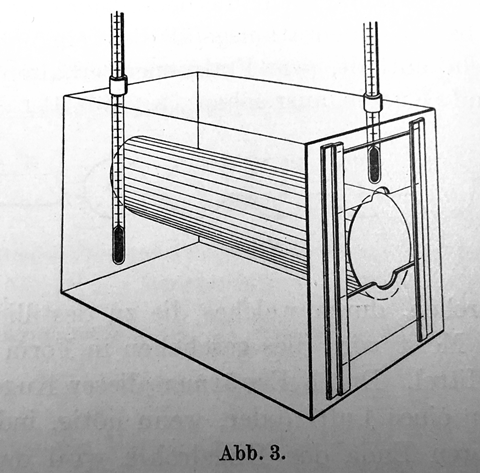
Alongside separation, Kober and his colleagues used absorption spectroscopy to characterise and identify their products. He wrote a dozen papers in the 1930s, including the method for which he is sometimes remembered today: a colorimetric reaction that allowed simple quantification of steroids. Kober would later describe it as a complete fluke. Colleagues had reported that the sulfuric acid-based Liebermann-Burkhardt and Salkowski tests, then commonly used for steroids, gave interesting colours with sex hormones. Kober had a go and confirmed this. But just as he poured water into the test tubes to wash them out, the telephone rang. 10 minutes later the solutions had turned a delicate pink, a colour that turned out to be specific for oestrogens. He had stumbled across a new method, which became standard practice.
The Holocaust
In May 1940, Nazi Germany invaded neutral Holland. Suddenly things became very difficult for Jews who were now ostracised and forced to wear yellow stars on their clothing; shopping became ever harder and there were constant public humiliations. Laqueur, who had taken out Dutch citizenship, was stripped of his professorship and Organon, a ‘Jewish’ business, was put in the hands of the German pharmaceutical company Schering AG. Laqueur survived the Holocaust thanks to the intercession of senior Dutch colleagues, and his heroic first world war record.
The Kober family had no such protectors. There were now three children – Marianne, Ruth and Michael. The family moved from Amsterdam to Nijmegen and later to Oss. Kober, who had been a great concert-goer, often following the music with a score in his hands, was now forbidden this pleasure. He taught himself the violin instead.
In 1941, Salomon’s brother Max, who had emigrated to Haifa in Palestine, as had their sister Charlotte, sent a message through the Red Cross asking for news, and news of their mother who was still in Breslau. A couple of other letters have survived. A postcard from his mother, written in an almost impossible scrawl, tries to put a brave face on life where Jews had been crowded into Judenhaeuser (requisitioned slum ‘houses for Jews’). A long letter in 1942, written by her housekeeper, Bertha Moses, describes their mother’s cancer, radiotherapy and death. Perhaps Regina was lucky. Moses was deported to the notorious concentration camp at Theresienstadt (Terezin) in Czechoslovakia soon after and murdered there.
In November 1943 the family was arrested by the German authorities and sent to the transit camp of Westerbork in the northern region of Drente. Then they were shipped on transport 83 with 865 others to Theresienstadt, where they arrived on 18 January 1944. Salomon was transferred to Auschwitz on 28 September on transport no 1428. He must have been fit enough to be selected for slave labour in the camp, but there is no indication that, as a chemist, he was assigned to the Buna rubber works. Nevertheless, might he have met Primo Levi, who was also in the camp at the time? Eva and the children – aged 14, 12 and 7 respectively – followed on 19 October. The four were murdered on arrival in the camp two days later.
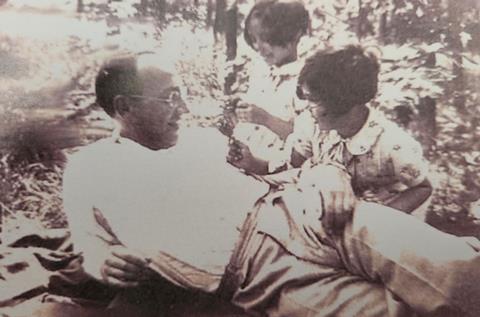
Kober may still have been alive when the Germans ordered that the extermination camp be abandoned in the face of the Soviet advance in January 1945. If so, along with many thousands of other inmates, Kober was forced to march westwards. He was never heard from again, one of the thousands who died of cold and hunger along the way. He is listed as having died on 7 February 1945 but there is no hard evidence to support this. The family’s names are inscribed in the wall of the Jewish Theatre in Amsterdam, the gathering point for deportation during the war, and there is a set of five ‘stumbling stones’, little name plaques embedded in the pavement outside their house at 19 Doelenstraat in Oss.
Kober’s distillation method (and his test) did not die with him. Just as he predicted, the method was improved and refined. There are anecdotal reports of bulb-to-bulb kugelrohr distillation being used in Germany in the 1960s, by which time it started to spread to the US. Mounted on a spinning motor like a rotary evaporator, with the distillation flask heated inside a metal water boiler or a transparent tube furnace, the fractions would condense on the cooler flask, or flasks, on the outside. Today, the Kugelrohr is a fast and efficient way of cleaning up small-scale reaction products. The flasks sport ground glass joints to make product recovery and cleaning easier. Hundreds of papers list a Kugelrohr distillation temperature in the characterising data. But the link to Kober has long been severed.
Organon would flourish after the war, driven in part by its involvement in the development of the contraceptive pill. In the 1960s it would merge with AKU to become the healthcare arm of Akzo Nobel. After being part of the endless mergers and consolidations that have plagued the pharma industry, Organon re-emerged in 2021 as an independent company focusing on contraceptive and healthcare products for women, based in the US. It did not respond to a request for information.
If reading the story of Salomon Kober and his fate has made you uncomfortable, then that is as it should be. Kober’s story is a warning from history. What the Holocaust and other organised massacres, pogroms, genocides and ethnic cleansing teach us is that this kind of thing can happen anywhere; it can happen even in what seems like an educated, prosperous and democratic country. We have seen it over and over again: Rwanda, Turkey, the Balkans, Nagorno Karabakh, Kenya, Darfur, Myanmar…
Democracy and freedom are precious. Never forget that it could happen here.
Acknowledgements
I am deeply indebted to Ruth HaCohen (Pinczower) and Becca Tsevat who unearthed family memories and made many corrections. Ulrich Tiedau, Andrea Pircher and Claudia Strachan used witchcraft to decipher several letters. Jakub Miłnarski hunted the archives in Wrocław. Yad Vashem and the Amsterdam Jewish Museum provided portraits and official documents. David Cohen, Janina Dewitz and Matthew Darlison gave me multiple leads, ideas and support.
References
S Kober, Biochem. Z., 1931, 232, 274

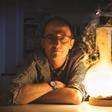

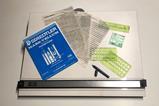
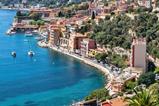












No comments yet